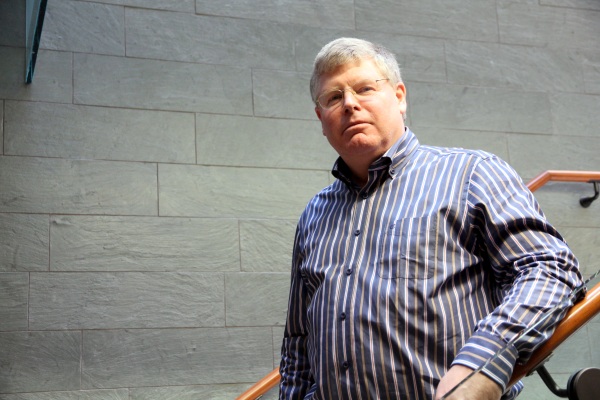Exploring advanced computing
January 22, 2015
Share
Andrew Stokes: What sort of work will you be focusing on during your secondment?

Don Aldridge: There are a number of projects I want to consider, such as pairing Queen’s with small and medium enterprises and exploring some developing technologies. What I’m looking at right now is how I can help Queen’s navigate the field of Advanced Research Computing and how to better use the High Performance Computing Virtual Laboratory (HPCVL). HPCVL is a tremendous asset that most people don’t know about.
AS: What makes the HPCVL exceptional?
DA: Its competitive advantage is its ability to handle secure medical data in a way that is compliant with Federal Drug Administration and privacy regulations. Many facilities can’t do that and there’s a strong reluctance to having medical data outside of a hospital. Because of its strong security, HPCVL is a great place to do research. The Ontario Brain Institute, for example, runs its BrainCODE application at HPCVL.
AS: Can you tell me about pairing Queen’s with businesses?
DA: There’s an organization called the Southern Ontario Smart Computing Innovation Platform (SOSCIP), which is a consortium of Ontario universities and IBM that has been operating for the last three years. Queen’s is a founding and active member, but I want to see how we can expand the university’s involvement. SOSCIP helps universities pair with small and medium enterprises to take advantage of advanced computing and deep analytics to develop products for commercialization. Involving companies from the beginning is the secret for creating market ready products. The larger objective is to create jobs and so far we’ve been very successful.
AS: What developing technology are you looking into?
DA: This is always a fun topic. The closest and most germane technology is one that IBM has been working on for a few years now, called Watson. It made its debut on Jeopardy! in 2012, where it defeated two former champions. Winning a quiz show was fun, but more importantly Watson is now helping to cure cancer — the era of cognitive computing is just beginning. Last year IBM launched a new division to take Watson to market, something that was last done since 1981 for the creation of the personal computer. Watson’s potential for research is immense and could bring about big changes to how computing is done. Two Queen’s professors, Drs. Pat Martin (Computing) and Brent Gallupe (Business), are teaching a course on Watson in the fall. I’m interested to see where cognitive computing technology leads.
This interview has been edited and condensed for clarity.